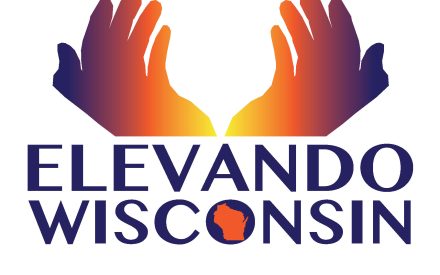Part of the Community Action Toolkit and the Broadband Toolkit
This article offers definitions and a simple process you can use to develop a vision and goals to support community planning and action.
Definitions
Vision
A vision is a statement that describes a desired future. Visions consider what is possible, unite people, and can inspire and motivate action.
Goals
Goals are specific and measurable. When achieved they will support your vision.
A Simple Vision and Goal Development Process
This process can be adapted to meet the specific needs of your group or community. The process can be repeated multiple times with different partners and community members to ensure that your vision and goals reflect the diverse needs and hopes of everyone impacted by the issue of concern.
You can engage people in vision and goal development a variety of ways.
- Individually via surveys and one-on-one conversations.
- Collectively via focus groups and facilitated visioning sessions.
Step 1: Collect input on the vision
Invite people to respond to the following series of questions.
Note: The order of the questions is intentional. It is easier for people to think about themselves first, and then take small steps outward, before thinking about the community last.
- What would (e.g. better broadband access, affordability, and adoption) mean for you?
- What would it mean for your family, or those closest to you?
- What would it mean for your neighbors?
- What would it mean for your organization or business?
- What would it mean for your/our community?
If you are visioning with a group continue with the following:
- In small groups, invite people to identify and discuss where their answers are similar and explore where their answers are different.
- Have each group share out and together identify themes or patterns.
- Based on these discussions, spend 15 minutes or so creating a draft vision statement.
Step 2: Collect input on goals
This could be a separate step, or it could be done during the same survey, conversation, focus group, or facilitated session as the vision input.
Share your current draft vision statement and invite people to respond to the following series of questions.
- What is getting in the way, or what might get in the way, of achieving our vision?
- What will help us achieve our vision?
- What one or two things could we do to make a difference and move us towards our vision?
- How will we know if we are successful in achieving each of these goals?
Note: These questions come from an action planning tool called the PATI Framework. You can learn more about PATI at this link – https://leadershipdevelopment.extension.wisc.edu/files/2020/10/2020-Mar-30_PATI-Framework-2.pdf.
If you are visioning with a group continue with the following:
- In small groups, invite people to identify and discuss where their answers are similar and explore where their answers are different.
- Have each group share out and together identify themes or patterns.
- Based on these discussions, spend 20-30 minutes creating a few draft goals together.
Step 3: Compile and review input, and draft vision and goals
If you gathered input using multiple surveys, one-on-one conversations, focus groups, or facilitated sessions, you will need to compile the input and look for themes. Themes are patterns that you see repeated in the input you gathered.
- Using the themes as a guide, draft a vision statement or update the draft you previously created. The vision statement should be descriptive enough that when someone reads it they have a clear picture of the desired future you are trying to achieve.
- You will want to share the draft vision statement with the individuals who provided input. Give them an opportunity to give feedback. Some questions you could ask them include:
- Does this vision statement reflect your hopes and dreams for the future? If no, please share how this vision statement could better reflect your hopes and dreams for the future.
- Is this a vision for the future that you can support? If no, please share what would need to change in order for you to support this vision.
Now, look at the input you received on the goals. Again you should look for themes and patterns.
- Using the themes as a guide, write down goals that will help you achieve the vision.
- You may find that you have a large number of goals. If that is the case you will need to prioritize those goals. Here are a few ways you can do that.
- Multivoting – invite individuals to vote for a specific number (usually five) of choices they think are most important. Using the results the group can identify goals that are favored by the most people. For more information see the American Society for Quality (ASQ) website here – https://asq.org/quality-resources/multivoting
- Decision Matrix – a table of rows and columns that helps you rate your options against criteria. Using the scores you can have a meaningful discussion about what goals you should prioritize. For more information see the ASQ website here – https://asq.org/quality-resources/decision-matrix
Step 4: Share the vision and goals
When and how you share the vision and goals with partners and community members can vary. Some best practices when sharing the vision and goals are:
- Use a variety of methods to share (e.g. social media, local news outlets, public bulletin boards, public events).
- Make sure the information is shared in formats that are accessible (e.g. accommodations for visual and hearing impaired individuals, interpretation and translation for individuals whose preferred language is not English).
- Provide information about how the vision and goals were identified, and who (individuals or groups) was involved in the process.
Step 5: Update the vision and goals as necessary
You may find that over time the vision and goals will need to be updated. If there are changes in the community or the needs of community members it is a good idea to revisit the vision and see if it needs to be revised or updated. As you achieve specific goals related to that vision you can identify new goals to prioritize.

 Elevando Wisconsin Program Report - Spring 2024
Elevando Wisconsin Program Report - Spring 2024 Using leadership to tackle the ‘crisis points’ of local government
Using leadership to tackle the ‘crisis points’ of local government How and why we must improve civic health
How and why we must improve civic health Engagement for Community Change
Engagement for Community Change


